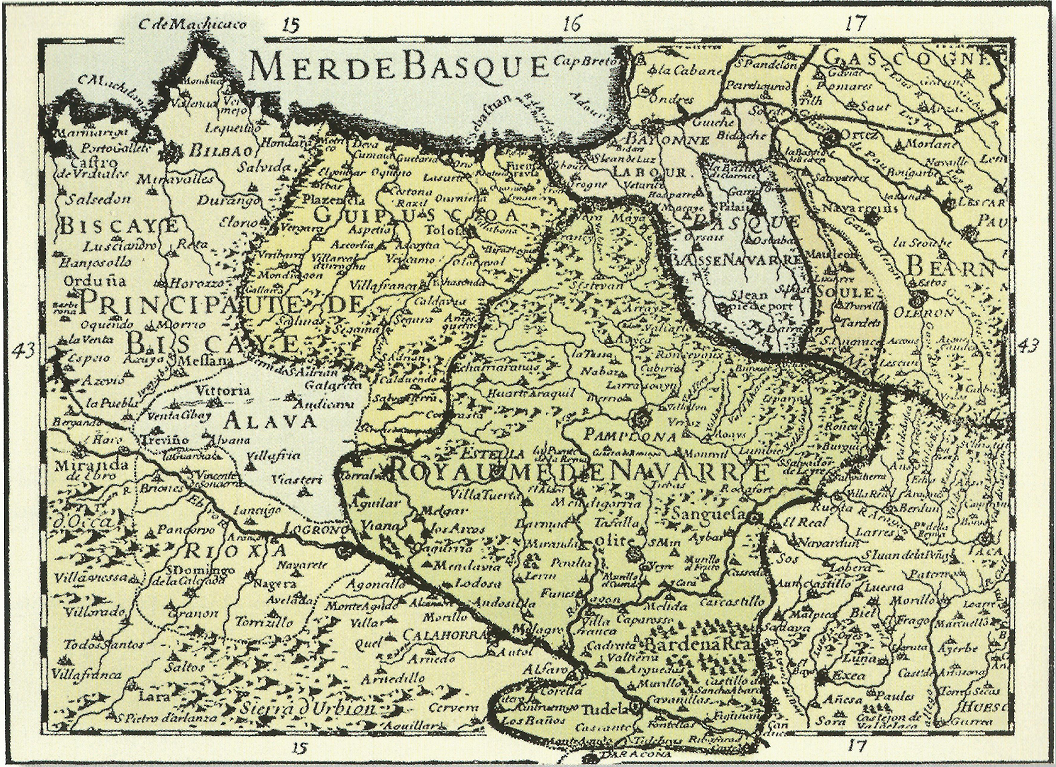My favorite dessert is milk pudding and my favorite milk pudding is milhassou from the southwest of France but today's story was inspired by another dessert based on milk that originates from a nearby region and that's intxaursaltsa. This wonderful tongue-twister is the name of a specialty from the Basque country.
A historic region of Spain and France, the Basque country has several provinces - including Navarre that used to be a medieval kingdom. The northern part of this kingdom, Lower Navarre, was the birthplace of Henry IV, king of France and grandfather to Louis XIV. It was also part of the historic region called Gascony and yes, Gascony was the birthplace of a still more fascinating person called D'Artagnan. I suppose you know that D'Artagnan, the fourth Musketeer, was not only a fictional character but if you don't, here is the info: Alexandre Dumas-père delegated the task of historical research to a professional scholar but in the case of his most famous hero, the life story was borrowed from a contemporary novel - supposedly a memoir of the real D'Artagnan, who had served as king Louis XIII's musketeer at the same time as the fictional one. (Louis XIII was the father of Louis XIV.) Unfortunately, there is absolutely no connection between either Henry of Navarre or D'Artagnan (real or fictional) and intxaursaltsa because this dessert in no more than 150 years old.
In
the language of the Basque people, intxaursaltsa means 'nut sauce' but
it's actually served for dessert. It's similar to, if not directly labelled by Spanish chefs as, manjar blanco or manjar de leche (Spanish terms for blancmange) and is typically prepared for Christmas. I have talked a little about blancmange here and here and I will do so more extensively in another post.
 |
| French map of the Basque districts in 1712 |
Intxaursaltsa originates from Gipuzkoa, region of the Basque country that shares a border with Navarre. Two interesting chapters in the history of the Basque people are 1) the conflict between Gipuskoa whalers and some Icelanders in 1615 which unfortunately ended in the massacre of 32 Spaniards off the northwestern coast of Iceland and 2) the success of the Royal Gipuzcoan Company of Caracas, a trading company that operated in Venezuela during the 18th century. Earlier on, people of Basque origin and various ranks had joined Columbus on his voyages and some of them backed the 1499 rebellion against him - including the nobleman Adrián de Moxica, whose interesting portrait in the film 1492: The Conquest of Paradise you can't have forgotten.
During the nineteenth century, the Basque country was divided between advocates of independence/self-government and those who supported a Bourbon monarch. Today the Basque country is autonomous & the favorite destination of travellers from all over the world. It all began in 1864, when the railway connected Paris with Madrid via the Basque country, increasing the popularity of two cities in the Bay of Biscay that were developed into tourist resorts: San Sebastián, the capital of Gipuzcoa, and Biarritz in the French Basque country.
.JPG)
Comments